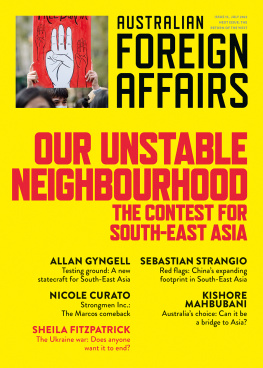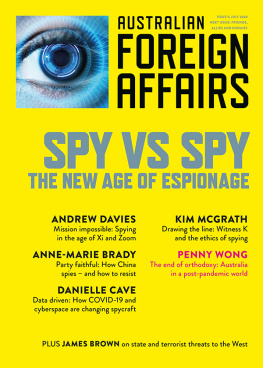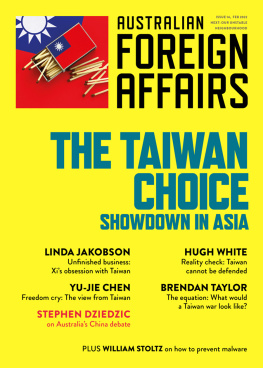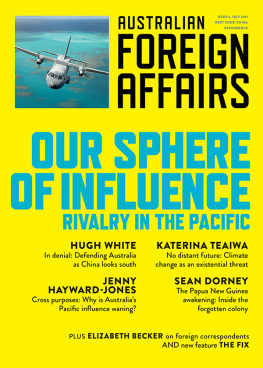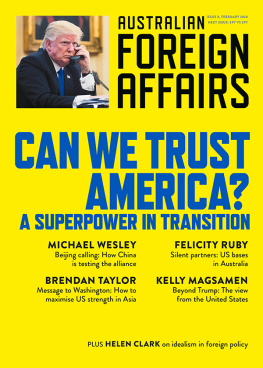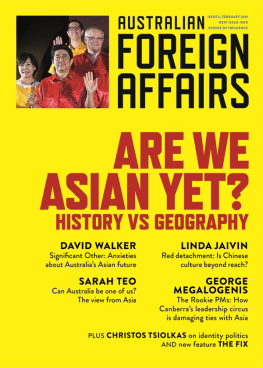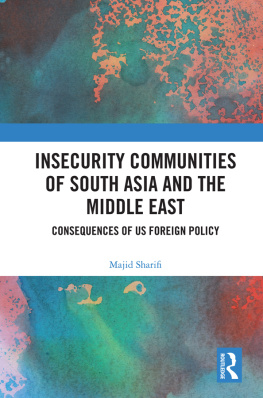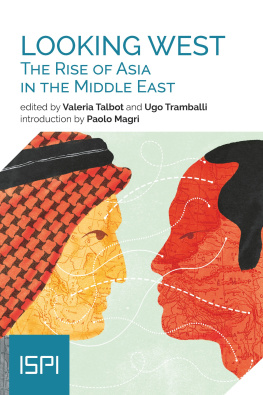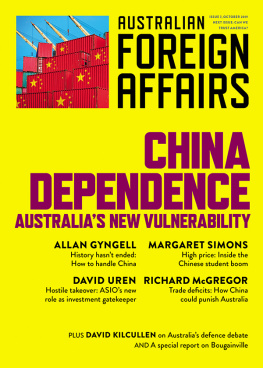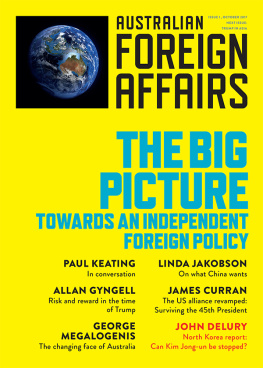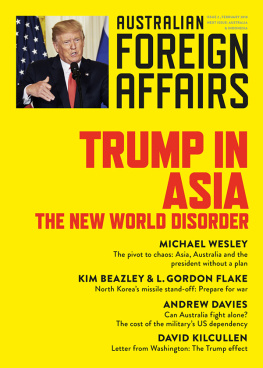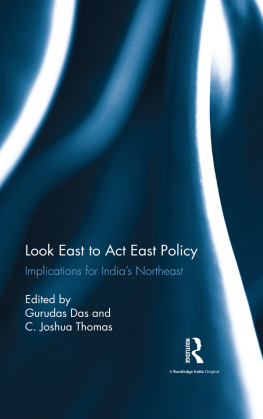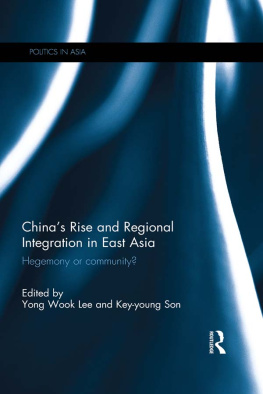The Back Page
FOREIGN POLICY CONCEPTS AND JARGON, EXPLAINED
DIGITAL DIPLOMACY
What is it: An awkward term with a lot of near-analogues. Cyber diplomacy, digital diplomacy, digiplomacy and ediplomacy have all been used, not very precisely.
So whats the difference: One distinction is that digital diplomacy refers to diplomacy that uses digital techniques, while cyber diplomacy deals with diplomatic issues arising from information technologies.
Where does it come from: Digital diplomacy first attracted attention in the late 1990s, then gained slow momentum in response to the September 11 attacks. In 2002, a Taskforce on eDiplomacy was established by Colin Powell (Secretary of State, US president George W. Bush). It was later renamed the Office of eDiplomacy. Nevertheless by 2009, it had as few as six members of staff.
Isnt it just a form of cultural diplomacy: Some people think so. When Hillary Clinton (Secretary of State, US president Barack Obama) announced a technology-driven 21st Century Statecraft, which included plans for a Civil Society 2.0, it attracted criticism. In Foreign Affairs, Emmanuel Yujuico (research fellow, London School of Economics) and Betsy Gelb (professor, University of Houston) called it social engineering destined to fail.
Does it work: So many different things get called digital diplomacy its hard to say. In a 2010 speech, Hillary Clinton, arguably the most influential figure in digital diplomacy, joked that even in established democracies like the United States, weve seen the power of these [social networking] tools to change history. Some of you may still remember the 2008 presidential election here. In 2016, her emails and their reception on social media then helped change the course of another election.
Contributors
Nicole Curato is an associate professor of sociology at the Centre for Deliberative Democracy and Global Governance at the University of Canberra.
Sheila Fitzpatrick is a renowned historian of the Soviet Union and modern Russia.
Allan Gyngell is national president of the Australian Institute of International Affairs.
Kishore Mahbubani is a Singaporean academic, diplomat and geopolitical consultant.
Adam Ni is director of the China Policy Centre in Canberra.
Mercedes Page formerly worked for the Australian Department of Foreign Affairs and Trade. She is a fellow with the Schmidt Futures International Strategy Forum.
Sebastian Strangio is a journalist and author and is currently the South-East Asia Editor of The Diplomat.
Thom Woodroofe is chief of staff to the president and CEO of the Asia Society and a fellow of the Asia Society Policy Institute, where he works on climate policy and diplomacy.
Editors Note
OUR UNSTABLE NEIGHBOURHOOD
For his first bilateral visit as prime minister, Anthony Albanese, travelled, as expected, to Indonesia.
But this thirty-year-old rite of passage for Australian leaders must amount to more than ticking off an item on an incoming prime ministerial to-do list. Unfortunately, these trips have not ensured that those who undertake them return with a lasting sense of the relationships importance. During his visit to Jakarta as a newly sworn-in leader in 2018, Scott Morrison spoke of bringing ties to a new level. Six weeks later, he flagged relocating Australias embassy in Israel from Tel Aviv to Jerusalem a move that caused disquiet in Indonesia, the worlds largest Muslim-majority nation. Two years later, when Morrison pushed for an inquiry into the origins of COVID-19, he contacted the leaders of countries such as the United States and France, but not Indonesia.
Beyond Indonesia, the grouping of countries that forms Australias immediate regional neighbourhood South-East Asia has, in recent years, been subject to similar patterns of neglect. Australian aid to the region has declined since 2014, though support has been lifted during the COVID pandemic. Prime ministerial visits to most South-East Asian countries have been rare and irregular; the last leader to make a standalone visit to the Philippines a nation of 115 million people was John Howard, in 2003.
Yet Australias declining focus on South-East Asia has occurred at a time when the regions importance has spiked. In 2020, the combined gross domestic product of the ASEAN countries was US$3 trillion, having more than tripled in fifteen years. South-East Asia has become central to the competition between China and the United States, as the contest between these powers has focused on the great shipping lanes that connect the Indian Ocean to Asia and the Pacific.
But countries in South-East Asia tend to view China, and the consequences of Chinas rise, very differently to Australia. Their approaches are not monolithic but tend to diverge from Australias for similar reasons they are closer to China (some are neighbours), and have longer memories of ties with it, including histories that extend into the days when it was last a great trading empire. Unlike Australia, they have provided the battlegrounds for previous wars between great powers, which shapes their views of the rivalries between the great powers of today.
The Albanese government has committed to improving ties across South-East Asia, including increasing aid and appointing a roving ambassador to the region. Significantly, Australias foreign minister, Penny Wong, has suggested that Australias approach must be based on an appreciation of the regions outlook. In a speech at the Australian National University in 2021, she said South-East Asian countries dont want to choose between the great powers but they want to exercise their own agency in how the region is being reshaped. Wong, it should be noted, is the first foreign minister who was born in the region. She told the Lowy Institute in 2019: Southeast Asia is not just our region; it is where I was born. I grew up with stories of the fall of Singapore, the occupation of Malaya and the unique American contribution to peace in the Pacific.
But the test for the Albanese government will be, as always, whether its commitment to the region endures as other political and international challenges arise. Wong had hoped her first bilateral visit would be to Indonesia and Malaysia, her birthplace. But Chinas Pacific outreach sent her rushing to Fiji, three days after her swearing in.
Developments in the Pacific have highlighted the danger of waiting for trouble before stepping up our diplomacy. Australia must start developing and improving relations with South-East Asia now. Albanese should visit the region, regularly, and build meaningful contacts and partnerships there, as should the rest of government and the business community. But, to succeed, Australia must first understand the outlooks of our potential partners in the region, and the causes of their concerns and anxieties and then the reasons for our neglect, and the ways in which we can enhance ties and remain committed, permanently.
Jonathan Pearlman
TESTING GROUND
A new statecraft for South-East Asia
Allan Gyngell
South-East Asia is the hyphen in the Indo-Pacific. Shaped by the great river systems of the Mekong, the Irrawaddy and the Salween, the subcontinental bulk of the mainland states of Thailand, Myanmar, Vietnam, Cambodia and Laos fractures into the archipelagos and islands of Malaysia, Singapore, Brunei, Indonesia and the Philippines. Linking the Indian and Pacific oceans, the Malacca, Sunda and Lombok straits are critical to the security of China, Japan, the Republic of Korea and, because of its alliance commitments, the United States. Its 650 million people constitute a combined economy of around US$3 trillion.

